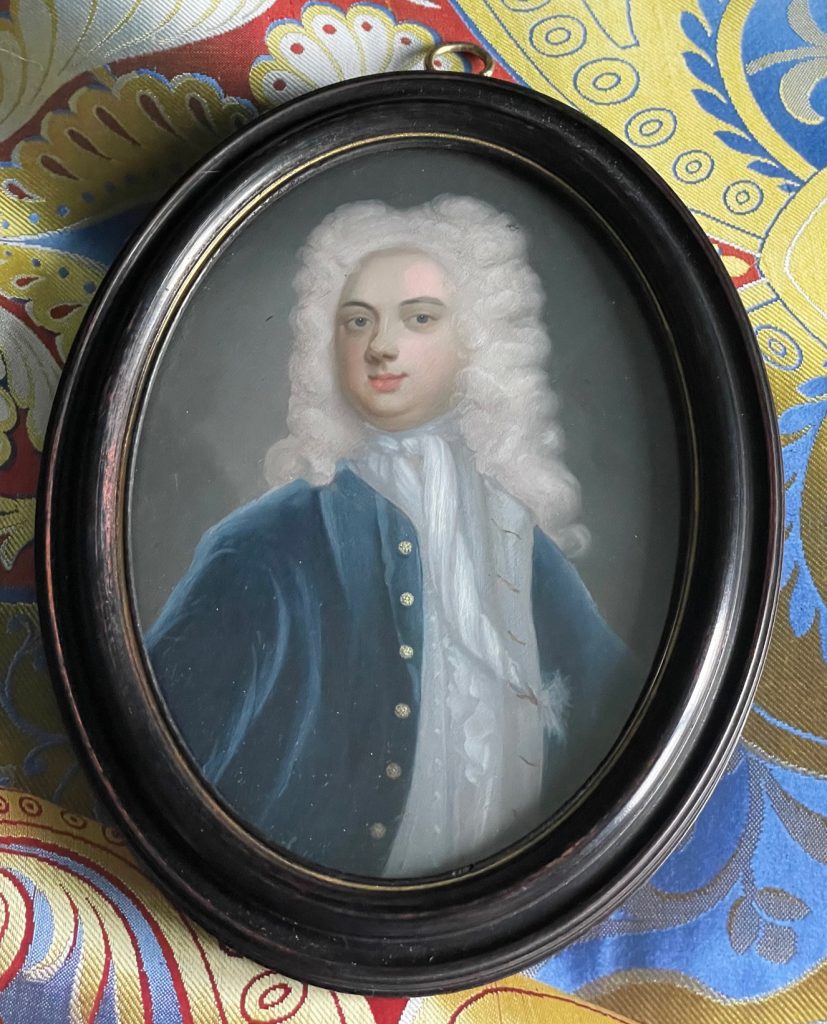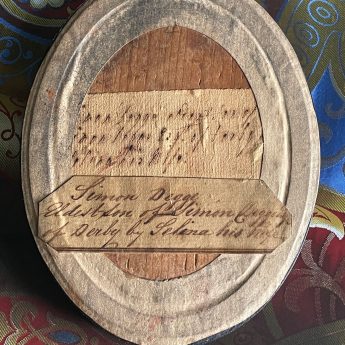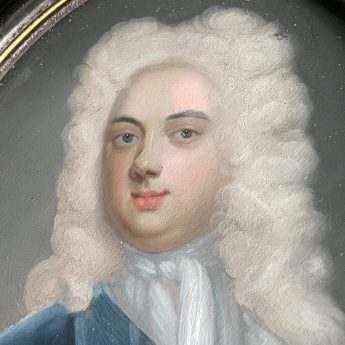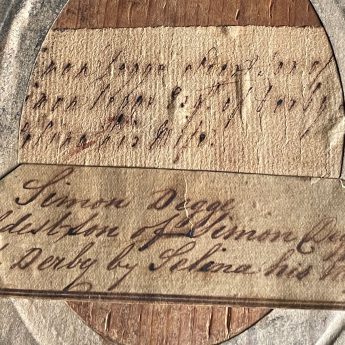
Vitiligo and Lunacy
Portrait miniatures, silhouettes, portraits & an omnium-gatherum of historical interest & character.
Enquiries and orders
Vitiligo and Lunacy
Simon Degge, circa 1716
£1,800
The most striking feature of this well-observed portrait is that the sitter suffers from vitiligo, a condition that causes patches of the skin to lose pigmentation. The condition was first observed around 1500 BC but even today there is no known cure. Vitiligo can, as in this case, run in families: a portrait of this sitter’s great grandfather – Sir Symon Degge (1612-1702) – suggests he too suffered from the complaint¹.
The well-dressed young gentleman shown here in a blue velvet coat and sumptuous periwig is Simon Degge. Born at Bowden Hall, Derbyshire in 1697, Simon was the eldest of the three sons of Simon Degge by his first wife Selina (née Williams). His mother died when he was just five years old making him co-heir to his maternal grandfather’s estate. Simon matriculated from Clare College, Cambridge in 1716. Like his father before him, he was admitted to the Inner Temple but does not appear to have ever practised law. Well educated and with a substantial fortune, Simon set out with his close friend Thomas Anson of Shugborough Hall on an extended Grand Tour of Europe. In 1723 they toured Belgium; in 1724 they visited Rome, Siena and Padua; in 1725 they did Rome, Florence and Naples; and in 1726 they were in Milan.
As well-heeled and well-informed antiquaries, Simon and his friend Anson were both elected members of the Royal Society in 1730. Simon continued to travel in Europe but, whilst in Paris in 1737, his mental health apparently began to fail leading to him being certified ‘a lunatic’. It is well documented that vitiligo worsens with age and can affect a sufferer’s emotional and psychological well-being.
As a certified lunatic, Simon Degge’s properties now came under Crown protection so his step-mother and half-siblings failed in their attempt to claim them. Simon died without recovering in February 1767, aged 70. With no children but having made a will whilst still of sound mind, he left his extensive property to his two younger brothers and their descendants. In the event, both brothers and their children pre-deceased Simon. Being the end of the family line, the High Court of Chancery stepped in and subsequently sold the estates.
Finely painted in oil on copper, the portrait can be attributed to the circle of Michael Dahl the Younger whose small ovals on copper from this period stylistically compare well. The portrait is in excellent original condition and is housed in a glazed turned wood frame with contemporary hand-written labels reverse.
1. Held in the Staffordshire County Buildings Collection
Item Ref. 7533
Size: framed, 168 x 130mm (6⅝ x 5")
Provenance: By family descent


